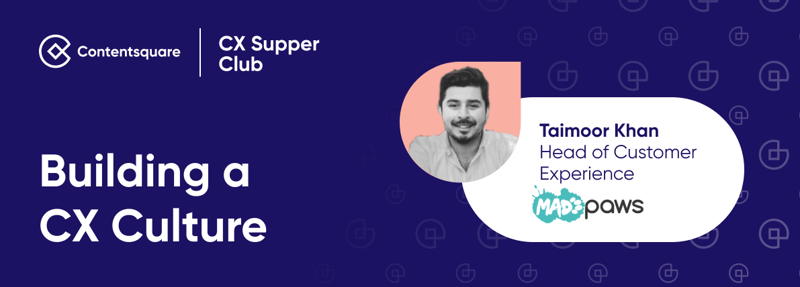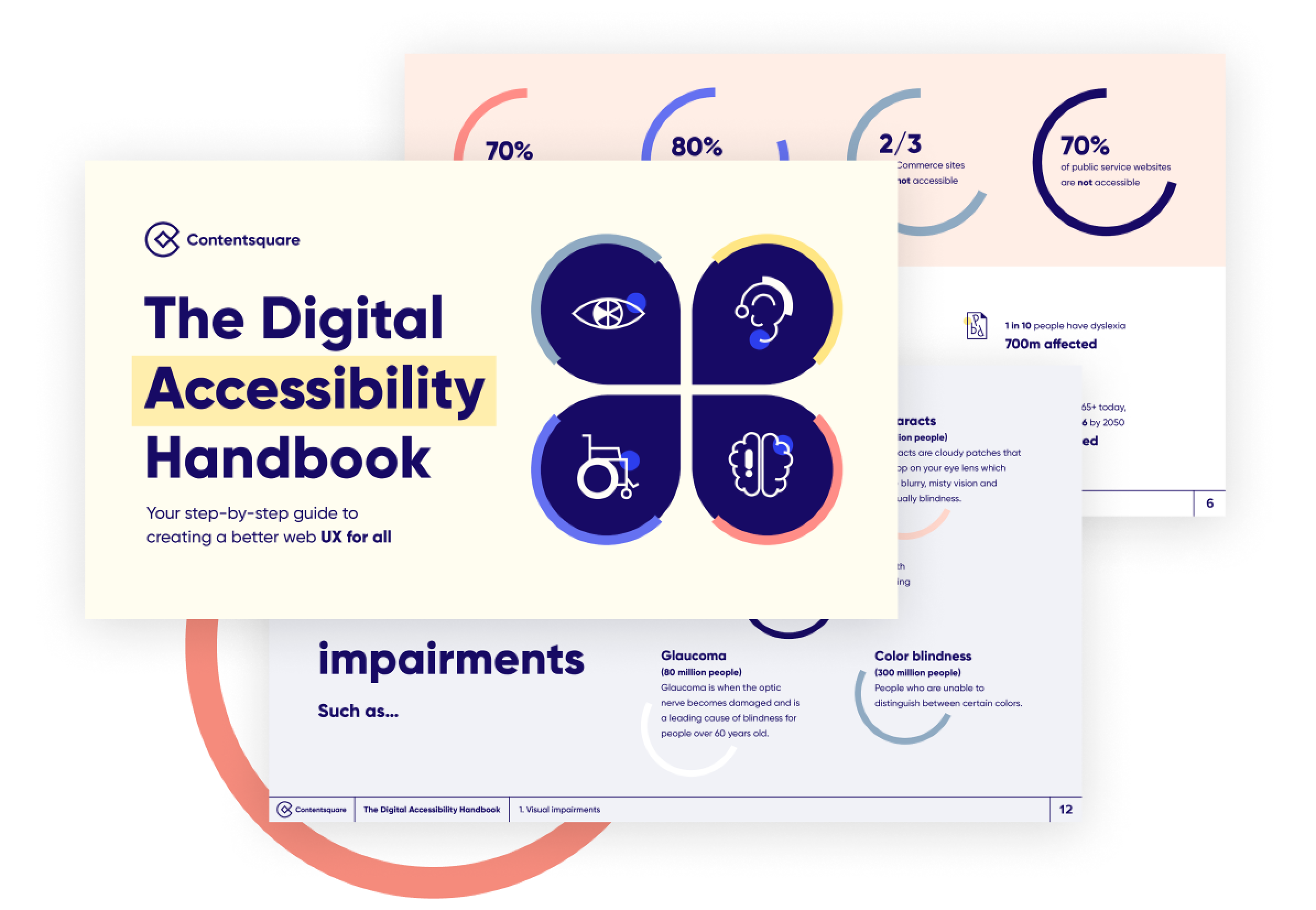Building a CX culture with Mad Paws
We sit down with Taimoor Khan, Head of Customer Experience at Mad Paws, Australia’s largest pet service marketplace connecting Pet Owners and Pet Sitters with a wider vision of making pet ownership seamless for all of Australia’s pets, and find out what it really means to build a CX culture.
Could you tell us about yourself?
I’m an Engineer by training, and I worked as one for a little bit but quickly realised that it was not for me. I’m a problem solver, and I love being challenged to solve them. I eventually transitioned into what you would traditionally call CX, cutting my teeth in corporates and then finding my mojo in the startup-to-scale space. I was part of the team at Marley Spoon that took them from start-up to the public juggernaut they are today, and now, Mad Paws is in a similar position of being a powerhouse in the Australian pet space.
My passion for CX is fuelled by being the customer’s champion. It comes from building teams within start-ups, and the microsystems crucial to their growth. I quickly realised that CX is my calling - even if that definition is very different from someone else’s.
So what is your definition of CX?
What I think it ultimately boils down to is solving customer pain points through a business lens. The biggest failing that I see in the CX industry sometimes is that we have these blinders on, and we only look at the customer pain point, and all we focus on is solving it as an isolated incident. However, we forget to look at what the effect on the business is - ultimately, if your business doesn’t survive, then you’re not going to be around to solve any customer pain points.
What does a day in your life look like?
I’m no productivity guru so unfortunately, I don’t have these 6, 7am morning routines, but I am a big proponent of my notebook - I make sure my tasks are prioritised for the next day. Some mornings I’ll listen to a couple of podcasts, like HBR. I really encourage people to listen to this because it builds you up to be a good leader. Crack the Customer Code is another good one that focuses on the user side, and that’s how I usually start my day. Then I get into work and my podcasts and threads get taken over by this programme called Mixpanel, a tool that allows us to visualise our data - I’m looking for business metrics, and conversion rates across the funnel, essentially studying the trends to see any outliers - I feel like this schedule primes me for an impactful day ahead.
How big is the team at Mad Paws?
Not massive - we are lean and efficient! The CX team is divided into two, the first being Customer Service, managed here in Australia and supported by our hard-working agents overseas. Secondly, we have “CX” which is more focused on traditional “CX” and revenue-generating projects - this team is made up of a Customer Experience Manager and an engagement Specialist. I will spend my time supporting both teams from a hands-on perspective and strategic planning perspective.
How did you build a culture of CX within such a small team?
For us, we started this right from when I joined the company. It was important to me to start building out a CX function from Day Zero because then what happens is that CX holistically gets combined with customer service. Customer service is reactive, and customer experience is proactive - and ideally, the two should come together to generate revenue because you’re proactively solving problems.
So what we did very early on was to start a Voice of Customer programme, because nothing gets employees or people in the business more excited than hearing from their customers - we even had our UX designers speak to them. We also took it a step further and held roundtable events that involved everyone on our supply chain, suppliers, pet sitters, customers - you name it. This allowed us to collect very specific feedback that helped us discover new problems and validate certain experiences. We also looked at customer service data points, because if you’re generating thousands of tickets, that’s thousands of interactions with heaps of valuable information.
I’ll admit that in the early days, we weren’t doing anything with all the information. It was just rows and rows of data in Google Sheets but as you get bigger, you’re able to then go back and build business cases, which you then trace back to the customer interactions & feedback. And that’s when we got really excited.
Did you face any challenges building this culture with your teams or senior stakeholders?
I wouldn’t call it a challenge but as with any new initiative, you need to prove that it works and that there is validity in what you’re doing. That’s where I had some early challenges because I was working on my own a lot at the time and trying to build a journey map and making it fluid to attach different data points and essentially trying to prove that Voice of Customer is sexy, that it’s not something that just lives on a Google Sheet is hard work - it takes time and 100% focus.
I had to find a way to make boring text-based data into something palatable because palatability equals understanding, which equals acceptance.
Being able to link VOC to business metrics (not necessarily revenue) allowed for greater understanding and appreciation of this initiative.
In my opinion, CX leaders need to pay just as much attention to business metrics as they do to customer service, which is why programmes like Mixpanel are crucial for us because it helps us understand conversion rates - something you really need to pay attention to when you’re experimenting.
What is the CX journey like at Mad Paws?
So CX at Mad Paws is a little different. We don’t have UX and UI designers or are set up like a Product Team - what we do is what I call “skunkworks”. We find problems, prioritise, release a solution, iterate and it goes into a cycle of improvement. Those findings are then presented to the business; So now the business takes the packaged problem and knowing that it’s already been validated, will then slot it into the product roadmap. Our way allows us to deliver and churn out customer problems and solve them at a more rapid rate because a team of 3 individuals works faster than a team of 25.
How can larger teams adopt your agile approach?
Even larger organisations are understanding the importance of this model. Creating these micro teams allows for much more movement and rapid development. For example, Coca-Cola is now developing these kinds of R&D departments within their product teams, which have more free rein. They then basically go out and try to execute solutions prior to the general business taking that direction. This allowed them to reduce the time it takes to validate a problem for a big budget, a big company. It’s really cool seeing this model coming to life.
What are some issues that startups should consider earlier, but don't?
Every startup will have a customer service function, I view customer service and customer experience as one package. In the earlier days, businesses should be aware of the difference between reactive and proactive problem solving and research - some steps should be taken to try and instill this into the culture early on.
So a mistake I’ve made in the past is when I hired for skill, but what I really needed to hire for is a mindset. I’m going to annoy some people when I say this but in CX, to get 80% of the results, it doesn’t require a very specialised skill - it takes a certain mindset. Skills can be acquired, but not mindset.
So, in short, don’t make the same mistakes I did; my advice these days is to make sure you combine [CX] with your customer service function so it can get off the ground fast and hire passionate people who have a mindset for actively wanting to solve problems.
What are some trends or shifts in mindset that you're seeing companies adopt with CX?
From a tech perspective, there’s definitely a move to an omnichannel platform, which I have mixed feelings about. I think if you are a startup that can afford it - something that allows you to get your customer tickets, handle your proactive comms, do your marketing, receive app notifications - then go for it because it simplifies things and it’ll allow you to maintain a uniform customer experience as you scale. However, this does take away from the experience and from the hustle mindset where it’s all about the small actions that can yield 80% of the results. I see bigger companies realising this, and they’re creating smaller teams to allow them to be more agile.
Inversely, I also see small companies investing in big tech to try and solve their problems, which I think is an unfortunate trend. I feel that as CX gets out there more, and people start realising it’s not just this buzzword, but actually a prescribed set of actions that will get results, then more people are going to adopt it. But it’s up to people like us to propagate that philosophy or that high-growth mindset - don’t be dependent on technology, let technology work for you.
.png)





